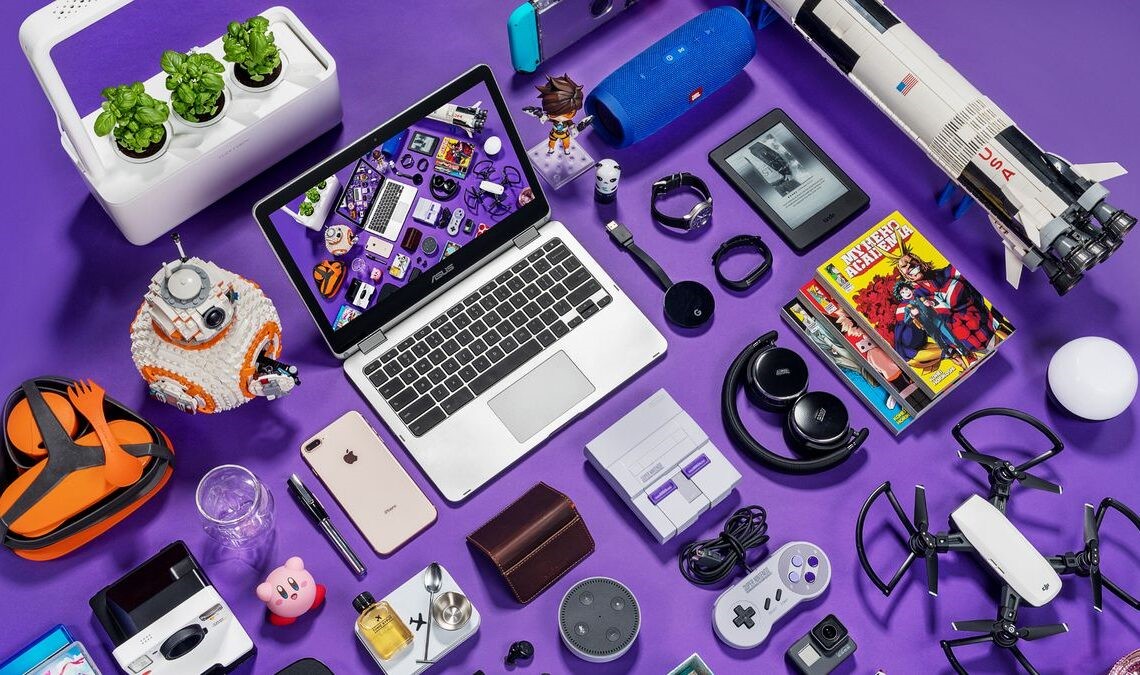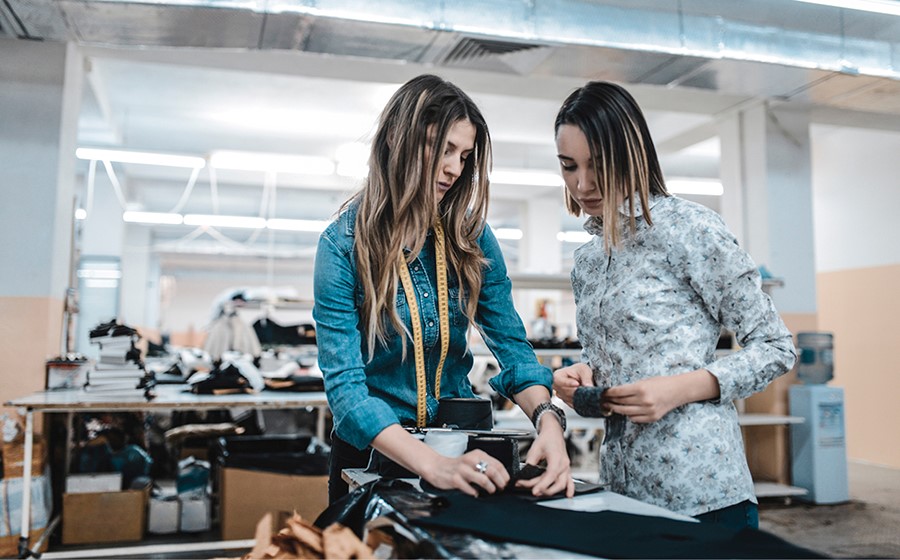Introduction
The fashion industry, renowned for its creativity and trendsetting, has been facing significant challenges in recent years, from counterfeiting to supply chain opacity. As the demand for luxury items, unique pieces, and limited-edition collections rises, so too does the prevalence of counterfeit goods. The issue of authenticity remains a critical concern not only for high-end brands but for consumers and businesses alike.
- Understanding Blockchain Technology
Blockchain is essentially a decentralized digital ledger used to record transactions across multiple computers in such a way that the registered transactions cannot be altered retroactively without the alteration of all subsequent blocks. This technology is inherently transparent and secure, as every participant in the network has access to the full transaction history.
Each block in the blockchain contains a list of transactions that are cryptographically linked to the previous block, making it nearly impossible to tamper with or forge information once it is recorded. Because of these features, blockchain has become synonymous with security, transparency, and trust.
The core principles that make blockchain a reliable technology for authentication in the fashion industry include:
- Decentralization: Information is not controlled by any single entity. This reduces the risks of fraud, corruption, and manipulation by centralized authorities.
- Transparency: All transactions are recorded on an open ledger, accessible by all parties involved.
- Immutability: Once a transaction is recorded, it cannot be altered, ensuring the integrity of data.
- Security: Blockchain uses cryptographic techniques to secure data and transactions, making it highly resistant to hacking or unauthorized access.
These features make blockchain a compelling solution for the fashion industry, which has long struggled with issues of counterfeiting, fraud, and supply chain inefficiencies.
- The Challenges in Fashion Authentication
The fashion industry has always been vulnerable to issues related to authenticity. Counterfeit goods are not only a threat to the intellectual property of designers and brands, but they also pose significant risks to consumers, such as poor product quality, safety concerns, and the loss of trust in established brands.
Key challenges in fashion authentication include:
- Counterfeiting: The rise of fake luxury goods, from bags to sneakers, is an ongoing battle. Counterfeiters are becoming increasingly skilled at replicating designs, making it difficult for consumers to differentiate between genuine and fake products.
- Supply Chain Transparency: Fashion supply chains are often long and convoluted, with multiple intermediaries involved in the production, distribution, and sale of garments. Without proper tracking mechanisms, it’s hard to verify the authenticity and origin of a product.
- Lack of Consumer Trust: In an era where consumers are becoming more conscious of where their products come from, how they are made, and whether they are ethical, transparency is crucial. Consumers are increasingly looking for proof that the product they are buying is genuine and ethically sourced.
Blockchain technology presents a way to address these issues, offering a secure and verifiable method for proving the authenticity of fashion items.
- How Blockchain Can Enhance Fashion Authentication
Blockchain’s application in fashion authentication revolves around creating a transparent and immutable digital record of a product’s journey from inception to the consumer’s hands. This digital record can include various details such as:
- Product Origin: Blockchain can record information about the raw materials used in the product, where and how it was produced, and who was involved in each stage of the manufacturing process.
- Ownership History: As products move through the supply chain, blockchain can track ownership, transfers, and sales, providing a transparent history of the item. This can be particularly useful for luxury goods or limited-edition collections.
- Certification and Verification: Blockchain can be used to verify the authenticity of a product through certifications issued by trusted authorities. These verifications can be linked to a product’s digital ID on the blockchain.
- Smart Contracts: Smart contracts, self-executing contracts with terms directly written into code, can be used to automate aspects of product verification, such as payments, ownership transfers, and conditions for warranty or return.
Through these applications, blockchain technology ensures that every piece of data is permanently recorded and cannot be altered, providing a high level of confidence to consumers, brands, and retailers about the authenticity of products.
- Real-World Applications of Blockchain in Fashion Authentication
Several companies and fashion brands are already experimenting with blockchain technology to combat counterfeiting and improve supply chain transparency. Here are some noteworthy examples:
4.1. Everledger
Everledger is a London-based technology company that uses blockchain to track the provenance of luxury items, including diamonds, fine wine, and fashion products. The company works with manufacturers, brands, and retailers to create digital identities for products, linking them to the blockchain. This allows consumers to verify the authenticity and provenance of their purchases by scanning a unique QR code or RFID tag attached to the product.
Everledger’s blockchain platform has been adopted by high-end fashion brands to provide an immutable record of a product’s journey from design to retail. This offers consumers the confidence that the products they are buying are genuine and have been sourced ethically.
4.2. LVMH and VeChain
LVMH (Moët Hennessy Louis Vuitton), one of the world’s largest luxury goods conglomerates, has partnered with blockchain platform VeChain to combat counterfeiting and improve transparency in its supply chain. Through the use of blockchain, LVMH can provide consumers with verifiable information about the product’s journey, from raw materials to finished goods.
The project, named AURA, uses VeChain’s blockchain to record product data that can be accessed via a smartphone app. The goal is to offer customers detailed information about the origins of their products, ensuring their authenticity and ethical sourcing.
4.3. The RealReal and Blockchain
The RealReal, a leading online luxury consignment retailer, has partnered with Chronicled, a company that uses blockchain to authenticate high-value goods. The platform enables The RealReal to create a digital certificate of authenticity for each item sold, ensuring that customers can trust the provenance and authenticity of second-hand luxury goods.
Using blockchain, The RealReal can trace the history of each item, including the previous owner and the condition of the product, creating a transparent, trustworthy transaction process.
4.4. Prada and the Blockchain-Based “Proof of Authenticity”
Prada, an iconic fashion house, is exploring blockchain to combat the problem of counterfeiting in its luxury handbags. By collaborating with blockchain technology providers, Prada aims to provide a proof of authenticity for each of its products. The initiative will allow customers to access a digital certificate that proves their item is genuine and that it has passed through the authorized supply chain.
This proof of authenticity is recorded on the blockchain and can be accessed by scanning a code on the product. This ensures that counterfeiters cannot replicate the item’s unique authentication data.
- The Benefits of Blockchain for Fashion Authentication
The use of blockchain in fashion authentication offers numerous benefits for various stakeholders, from manufacturers to consumers:
5.1. Enhanced Consumer Trust
By providing verifiable, immutable records of a product’s authenticity, blockchain fosters trust among consumers. They can be confident that the products they purchase are genuine, reducing the risk of falling victim to counterfeits.
5.2. Improved Supply Chain Transparency
Blockchain enables brands to trace the entire supply chain, providing transparency into how and where a product was made. This is particularly valuable for consumers concerned with ethical sourcing, labor conditions, and environmental impact.
5.3. Protection of Intellectual Property
For designers and manufacturers, blockchain provides a secure way to protect their intellectual property. By creating an immutable record of a product’s creation and ownership, designers can more easily prove their ownership and defend against unauthorized reproductions.
5.4. Reduced Counterfeiting
Blockchain’s immutable records make it nearly impossible for counterfeiters to forge products. The transparent, verifiable nature of blockchain ensures that each product’s authenticity can be checked at any point in the supply chain.
5.5. Frictionless Authentication
Blockchain can automate the process of authentication through smart contracts, making it easier for both businesses and consumers to verify the authenticity of a product without relying on intermediaries.
- Challenges and Limitations
While the potential of blockchain in fashion authentication is vast, there are several challenges and limitations to consider:
6.1. Scalability
As the fashion industry is vast, with millions of products moving through supply chains globally, scalability is a significant challenge. Blockchain platforms must be able to handle the large volume of transactions that come with tracking millions of products.
6.2. Adoption and Integration
For blockchain to be effective, it requires widespread adoption by various stakeholders, including manufacturers, retailers, and consumers. Integration with existing systems can be complex and costly for brands, especially smaller businesses.
6.3. User Education
Consumers and retailers need to understand how blockchain works and how they can verify the authenticity of products using digital certificates. Education and awareness campaigns will be essential to drive adoption.
6.4. Privacy Concerns
While blockchain is transparent, the data stored on it can sometimes be sensitive. Ensuring that consumers’ personal information is kept private while still maintaining transparency and security could be challenging.
- The Future of Blockchain in Fashion Authentication
The potential for blockchain to revolutionize fashion authentication is immense. As the technology continues to mature and more fashion brands explore its possibilities, we can expect to see increased adoption across the industry. In the future, blockchain could be seamlessly integrated into the retail experience, providing consumers with instant access to verifiable product information at the point of purchase.
Moreover, as sustainability and ethical practices become more important to consumers, blockchain could play a crucial role in verifying the ethical sourcing of materials and ensuring that brands live up to their environmental commitments.
In the long term, blockchain may not only be a tool for authentication but also a foundational technology that transforms how the fashion industry operates, from design and manufacturing to retail and resale.













